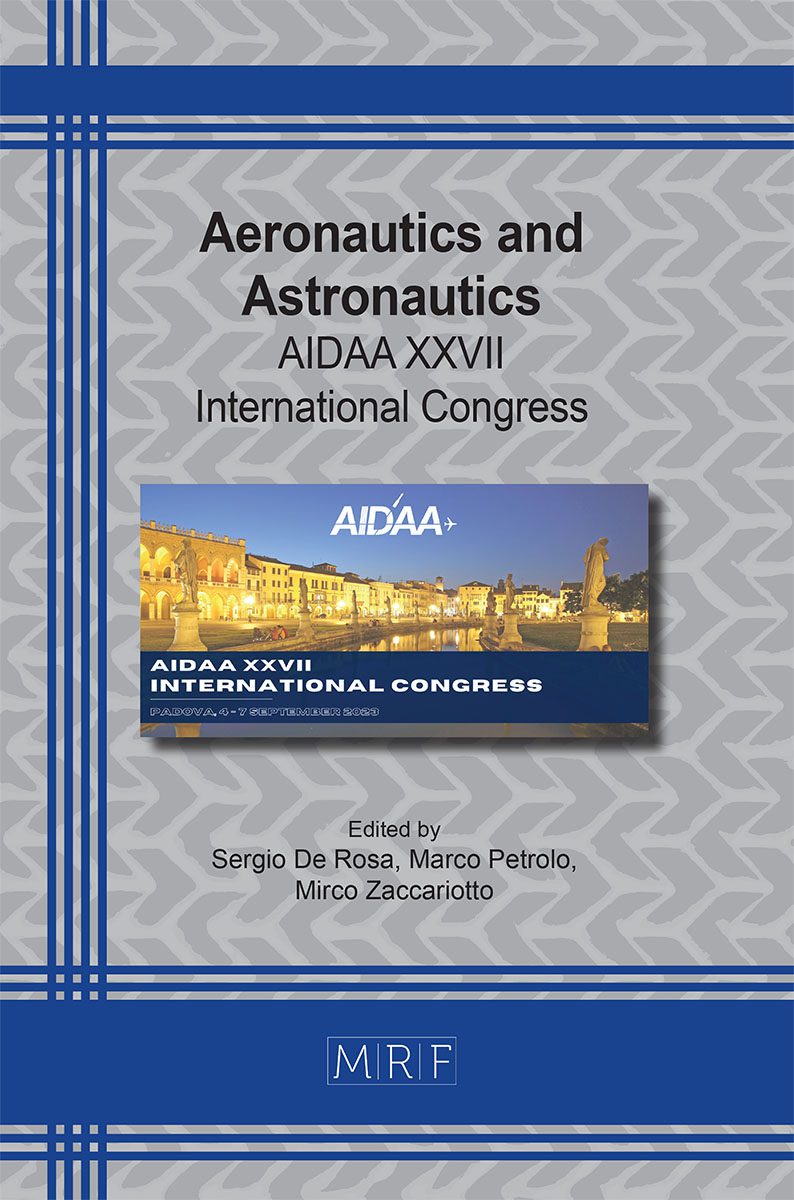Trajectory optimization and multiple-sliding-surface terminal guidance in the lifting atmospheric reentry
Edoardo Maria Leonardi, Mauro Pontani
download PDFAbstract. In this paper the problem of guiding a vehicle from the entry interface to the ground is addressed. The Space Shuttle Orbiter is assumed as the reference vehicle and its aerodynamics data are interpolated in order to properly simulate its dynamics. The transatmospheric guidance is based on an open-loop optimal strategy which minimizes the total heat input absorbed by the vehicle while satisfying all the constraints. Instead, the terminal phase guidance is achieved through a multiple-sliding-surface technique, able to drive the vehicle toward a specified landing point, with desired heading angle and vertical velocity at touchdown, even in the presence of nonnominal initial conditions. The time derivatives of lift coefficient and bank angle are used as control inputs, while the sliding surfaces are defined so that these two inputs are involved simultaneously in the lateral and vertical guidance. The terminal guidance strategy is successfully tested through a Monte Carlo campaign, in the presence of stochastic winds and wide dispersions on the initial conditions at the Terminal Area Energy Management, in more critical scenarios with respect to the orbiter safety criteria.
Keywords
Lifting Reentry, Optimal Guidance, Sliding-Mode
Published online 11/1/2023, 6 pages
Copyright © 2023 by the author(s)
Published under license by Materials Research Forum LLC., Millersville PA, USA
Citation: Edoardo Maria Leonardi, Mauro Pontani, Trajectory optimization and multiple-sliding-surface terminal guidance in the lifting atmospheric reentry, Materials Research Proceedings, Vol. 37, pp 615-620, 2023
DOI: https://doi.org/10.21741/9781644902813-134
The article was published as article 134 of the book Aeronautics and Astronautics
![]() Content from this work may be used under the terms of the Creative Commons Attribution 3.0 license. Any further distribution of this work must maintain attribution to the author(s) and the title of the work, journal citation and DOI.
Content from this work may be used under the terms of the Creative Commons Attribution 3.0 license. Any further distribution of this work must maintain attribution to the author(s) and the title of the work, journal citation and DOI.
References
[1] R. Haya, L. T. Castellani and A. Ayuso, “Reentry GNC concept for a reusable orbital platform (space rider)”, 69th International Astronautical Congress, Bremen, Germany, IAC-18 D, Vol. 2, 2018, p. 5.
[2] Z. Krevor, R. Howard, T. Mosher and K. Scott, “Dream Chaser Commercial Crewed Spacecraft Overview”, 17th AIAA International Space Planes and Hypersonic Systems and Technologies Conference, AIAA Paper 2011-2245, 2011. https://doi.org/10.2514/6.2011-2245
[3] N. Harl and S. Balakrishnan, “Reentry terminal guidance through sliding mode control”, Journal of Guidance, Control and Dynamics, Vol. 33, No. 1, pp. 186-199, 2010. https://doi.org/10.2514/1.42654
[4] K. D. Mease and J.-P. Kremer, “Shuttle Entry Guidance Revisited Using Nonlinear Geometric Methods”, Journal of Guidance, Control and Dynamics, Vol. 17, No. 6, 1994, pp. 1350-1356. https://doi.org/10.2514/3.21355
[5] J. Benito and K. D. Mease, “Nonlinear Predictive Controller for Drag Tracking in Entry Guidance”, AIAA/AAS Astrodynamics Specialist Conference and Exhibit, AIAA Paper 2008-7350, 2008. https://doi.org/10.2514/6.2008-7350
[6] G. Minwen and W. Dayi, “Guidance Law for Low-Lift Skip Reentry Subject to Control Saturation Based on Nonlinear Predictive Control”, Aerospace Science and Technoogy, Vol. 37, No. 6, 2014, pp. 48-54. https://doi.org/10.1016/j.ast.2014.05.004
[7] P. Lu, “Entry Guidance: A Unified Method”, Journal of Guidance, Control and Dynamics, Vol. 37, No. 3, 2014, pp. 713-728. https://doi.org/10.2514/1.62605
[8] C. A. Kluever, “Unpowered Approach and Landing Guidance Using Trajectory Planning”, Journal of Guidance, Control and Dynamics, Vol. 27, No. 6, 2004, pp. 967-974. https://doi.org/10.2514/1.7877
[9] M. R. K. Bollino and D. Doman, “Optimal Nonlinear Feedback Guidance for Reentry Vehicles”, AIAA Guidance, Navigation and Control Conference and Exhibit, AIAA Paper 2006-6074, 2006. https://doi.org/10.2514/6.2006-6074
[10] F. Fahroo and D. Doman, “A Direct Method for Approach and Landing Trajectory Reshaping with Failure Effect Estimation”, AIAA Guidance, Navigatin and Control Conference and Exhibit, AIAA Paper 2004-4772, 2004. https://doi.org/10.2514/6.2004-4772
[11] B. Gaude, R. Linares and R. Furfaro, “Deep reinforcement learning for six degree-of-freedom planetary landing”, Advances in Space Research, Vol. 65, No. 7, pp. 1723-1741, 2020. https://doi.org/10.1016/j.asr.2019.12.030
[12] X. Liu, F. Li, Y. Zhao, “Approach and Landing Guidance Design for Reusable Launch Vhicle Using Multiple Sliding Surfaces Techniques”, Chinese Journal of Aeronautics, Vol. 30, No. 4, 2017, pp. 1582-1591. https://doi.org/10.1016/j.cja.2017.06.008
[13] A. Vitiello, E. M. Leonardi and M. Pontani, “Multiple-Sliding-Surface Guidance and Control for Terminal Atmospheric Reentry and Precise Landing”, Journal of Spacecraft and Rockets, Vol. 60, N. 3, pp. 912-923, 2023. https://doi.org/10.2514/1.A35438
[14] M. Pontani, Advanced Spacecraft Dynamics, 1st ed., Edizioni Efesto, Rome, 2023, pp. 253-259.
[15] C. Weiland, Aerodynamic Data of Space Vehicles, 1st ed., Springer Berlin, Heidelberg, 2014, pp. 174-197. https://doi.org/10.1007/978-3-642-54168-1_1
[16] D. R. Jenkins, Space Shuttle: The History of the National Space Transportation System: The First 100 Missions, D. R. Jenkins, Cape Canaveral, 2008, pp. 260-261.
[17] J. T. Betts, Practical methods for optimal control and estimation using nonlinear programming, 2nd ed., SIAM, Philadelphia, 2010, pp. 247-256. https://doi.org/10.1137/1.9780898718577
[19] S. Siceloff, “Nasa-Space Shuttle Weather Launch Commit Criteria and KSC End of Mission Weather Landing Criteria”, 2003.












